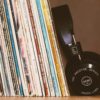I’ve seen this question pop up on the internet time and time again. Arranging or composing for instruments you have no in-depth knowledge of is evidently something most composers and producers will have to deal with at some point. And it can be quite frustrating if you don’t know how to tackle this.
As a (largely) video game composer, writing for different instruments and styles is one of the most important qualities. So I’d like to share my approach to this. It might not be perfect, but it got me through more than ten years of production and composition with satisfying results.
In this article, I want to tackle two very different questions:
a ) How do I realistically arrange or write for instruments I don’t play?
b ) Should I even bother?
Arranging for Unknown Instruments
The answer to that may be rather blunt: you’ll have to learn the instruments’ limitations, then add the human factor. Sounds pretty straightforward, but can be very tricky, depending on the instrument. I’ll explain both.
Limitations
The first thing you should look at is what sounds an instrument can produce and which ones it can’t. Obviously, a guitar’s limitations are very different from those of a drum kit, which in turn are different from brass instruments, and so on.
A general approach would be to ask these questions:
- What’s the instrument’s range?
- Is polyphony possible? If yes, how many notes at the same time?
- What are the different styles of playing and how do they affect the sound? (i.e.: pizzicato, marcato and legato in strings)
Most of this information can be retrieved from Wikipedia or similar resources. This is a good starting point for your research!

The reason people prefer real performances over virtual instruments is that Human players are imperfect — which makes the sound much more organic.
The Human Factor
Then there’s something I very dramatically like to call ‘the human factor’. Humans are not machines, they don’t play everything perfectly. They cannot switch frets in an instant or play fifteen simultaneous notes all over a piano’s 88-key claviature. Two identical notes, when played by a human, will never sound exactly the same. Timing, velocity (note ‘loudness’) and note length will be slightly different each and every time.
Especially when arranging for unknown instruments it’s always necessary to research some things first:
- How fast can the player switch notes?
- How long can a note be held?
Even if a master virtuoso might still be able to play your song, you’d probably want to simplify things a bit. This makes things easier while working with sessions musicians, too. 🙂
Learning Through Imitation
Now that we have the limitations of the instruments down, it’s always a good idea to look just how people use the instrument in the ‘real world’ and try to imitate. Just because it’s technically possible doesn’t mean an instrument is typically used in that way.
For practise, you could always take songs you like that feature a real recording of the instrument. From there, just try to rebuild it using a sequencer. This should give you some idea about how the instrument is handled.
This is especially helpful for rhythm instruments. Study how a typical drum beat is constructed and learn the basics of how a beat works, then try to build on that knowledge and emulate.
You can always get wild and creative from there. It’s much easier to diverge from the standard formula if you know what it is.
Why Should I Bother?
When reading this, you might ask yourself: why bother? Now that we have the capability to extend an instrument beyond what human players can achieve, why not use that?
That’s a great question!
To me, the answer is: if it suits the song, go ahead! You might create some very fresh and interesting sounds.
But: Usually, even people who are not musically inclined might find something ‘odd’ about a trumpet playing 32nd notes at 200 BPM. Without being able to put a finger on it, most people think it sounds unnatural. So I’d recommend only using it deliberately and in full awareness of how it might affect the listener.
Many early samplers (like the famous Mellotron) actually played with humans’ perception of musical instruments, and this ‘unnatural’ sound is now frequently sought after. If that’s what you’re aiming for, don’t let this article limit your creativity.
As a rule of thumb, I’d say: if you don’t have an explicit reason to make an arrangement unrealistic, don’t. Other than that, everything’s allowed that sounds good — ultimately you’re the one who has to make that decision. But if this article taught you anything, it’s to make an informed decision rather than an unconscious one.
So, in a nutshell: study, imitate, adapt, and experiment. 🙂
How to Arrange for Specific Instruments
Image Credit:
- Photo by Nathan Bingle on Unsplash
- Photo by Providence Doucet on Unsplash




